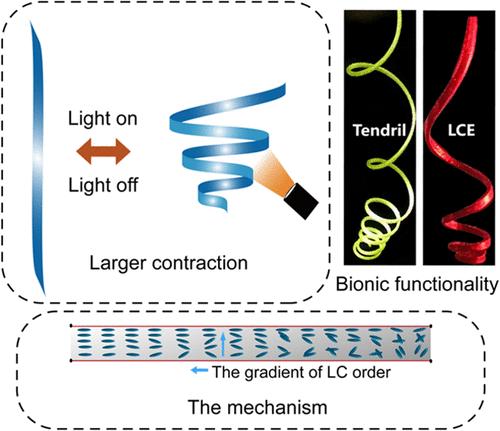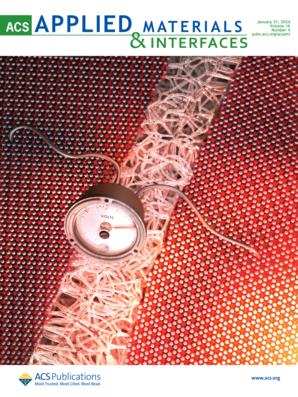Kirigami-Inspired Light-Responsive Conical Spiral Actuators with Large Contraction Ratio Using Liquid Crystal Elastomer Fiber
IF 8.3
2区 材料科学
Q1 MATERIALS SCIENCE, MULTIDISCIPLINARY
引用次数: 0
Abstract
Liquid crystal elastomers (LCEs) are among the key smart materials driving soft robotics and LCE fibers have garnered significant attention for their rapid response characteristics. A convenient and fast method for programming orientations of liquid crystal molecules is a focal issue in LCE applications. Inspired by the Kirigami technique, here, we propose a novel method for fabricating LCE fibers based on customizable cutting paths and secondary photo-cross-linking. While most existing LCE actuators exhibit contraction ratios of around 30 to 40%, our conical spiral actuator, fabricated from LCE-carbon nanotube (CNT) fiber using the proposed method, demonstrates a significantly higher contraction ratio, reaching up to 80%. The contraction ratio can be controlled by adjusting the cutting path parameters and we elucidate the mechanism linking liquid crystal orientation to the distribution of contraction ratio. Additionally, the conical spiral deformation of the actuator can be manipulated with light radiation, enabling versatile functionalities such as catching, twisting, and gripping. We hope that the novel LCE fiber fabrication method presented provides new insights for programming and preparing LCE fibers, offering a valuable reference for the application of smart soft materials.

求助全文
约1分钟内获得全文
求助全文
来源期刊

ACS Applied Materials & Interfaces
工程技术-材料科学:综合
CiteScore
16.00
自引率
6.30%
发文量
4978
审稿时长
1.8 months
期刊介绍:
ACS Applied Materials & Interfaces is a leading interdisciplinary journal that brings together chemists, engineers, physicists, and biologists to explore the development and utilization of newly-discovered materials and interfacial processes for specific applications. Our journal has experienced remarkable growth since its establishment in 2009, both in terms of the number of articles published and the impact of the research showcased. We are proud to foster a truly global community, with the majority of published articles originating from outside the United States, reflecting the rapid growth of applied research worldwide.
 求助内容:
求助内容: 应助结果提醒方式:
应助结果提醒方式:


